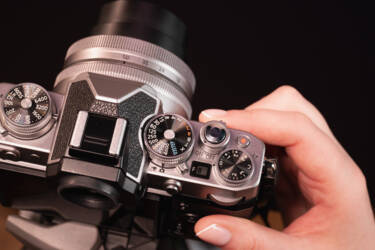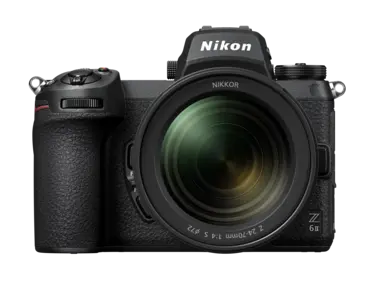What is aperture in photography?

Here’s everything you need to know about aperture – one of three photographic elements that make up the exposure triangle
Aperture, or lens aperture, is the hole inside your camera’s lens that can adjust to let more or less light through it to hit the sensor. The hole in the centre is called the pupil, and the adjustable blades that vary the size of that pupil are called the diaphragm or diaphragm blades.
Aperture is one of three photographic elements that make up the exposure triangle. The other two, ISO and shutter speed, we’ll explore in separate articles. As with the other two elements, changing your aperture setting will brighten or darken your photo, in this case by closing or widening the opening where light enters your camera.

From left to right: f/2.8, f/6.3, f/13, f/22. Z6II + NIKKOR Z 24-70mm f/2.8 S at 70mm focal length
Understanding aperture: what it actually does
Aperture is a description of the diameter of the opening at the front of a lens is expressed as a number: f/1.4, f/16, f/22, and so on. This is called the aperture number, f-number, f-stop, or just aperture.
The smaller the number, the wider the aperture will be: f/1.4, for example, is very wide and lets a lot of light in, while, f/22 is very narrow and lets just a pinhole of light through. This might seem counterintuitive, but you’ll get used to it pretty quickly.
There are a couple of things about your photograph you can control by adjusting the aperture:
- The brightness of your image
- The depth of field of your image
The depth of field is the amount of your photo that’s in focus. The wider your aperture, the narrower your focal plane will be, and vice versa. One of the most well-known examples of that occurs in portrait photography, where a very shallow depth of field is created to focus on just your subject by using a very wide aperture, such as f/1.2 or f/1.4. A narrower aperture brings more of your image into focus, commonly used in genres like landscape photography.

From left to right: f/2.8, f/6.3, f/13, f/22. Z6II + NIKKOR Z 24-70mm f/2.8 S at 24mm focal length
Common terms
A few common phrases you’ll hear that have to do with aperture, defined:
- Photographing ‘wide open’ means photographing at the widest aperture possible for your lens. In other words, the aperture is all the way open.
- Stopping down means narrowing your aperture to darken the exposure of your image.
- Focal plane is the part of your image that’s in focus, expressed as a flat plane or section of the photograph.
- A ‘bright’ or ‘fast’ lens is a lens with a wide aperture, such as f/1.2, 1.4, or 1.8. They’re called bright because they let more light in, and fast because that extra light lets you use a higher shutter speed without darkening your exposure too much.
- Bokeh is the term for the rounded blurs that happen when you use a very wide aperture that blurs out most of your image. Lights in the background and foreground, for example, can be blurred into smudged balls of light that add a nice aesthetic element to your photo.
Choosing the right aperture for your photos
The aperture you’ll use in your images relates to what you are photographing and what you want to convey with your image.
If you want to focus on someone’s starkly blue eyes, for example, you might use a very high aperture like f/1.2 so only their eyes are in focus. With something like landscape or street photography, you’ll want most or all of the image in focus, so you would use a higher f-number such as 8, 16, or 22 (although at higher apertures it is possible that overall sharpness of the image decreases slightly as depth of field increases).
The lighting in your environment also dictates what aperture to use. If you’re in a dimly lit space like a concert venue, a wider aperture will let in more light for a better image. Conversely, photographing outside at midday would require you to stop down to a higher aperture such as f/16.
Bokeh is a combination of the right focal length, aperture, distance from camera and distance of subject from the background
To practise, photograph the same subject at multiple apertures and inspect your image to see how each setting affects the exposure and focal plane. Once you’re comfortable with that, apply that knowledge to the photos you make in different ways. Try a wide aperture portrait to get a soft-focus background or a sharp image of an interesting building to bring out its textures and lines.
Your camera’s aperture priority mode is another helpful way to understand how aperture works in photography. It allows you to change your aperture setting and handles everything else automatically. Using this mode shows you how aperture affects your other exposure settings – ISO and shutter speed – and can help you understand the way elements of the exposure triangle work together.
Once you’ve mastered this, you can move on to other elements of exposure and eventually take full manual control of your camera. You can also learn all three elements at once – whichever makes the most sense to you.
More in Camera 101s
Better photography starts here

Unlock greater creativity









